 Travel
Travel  Travel
Travel  Creepy
Creepy 10 Haunted Places in Alabama
 History
History Top 10 Tragic Facts about England’s 9 Days Queen
 Food
Food 10 Weird Foods Inspired by Your Favorite Movies
 Religion
Religion 10 Mind-Blowing Claims and Messages Hidden in the Bible Code
 Facts
Facts 10 Things You Never Knew about the History of Gambling
 Weird Stuff
Weird Stuff 10 Cool and Creepy Facts about Collecting Tears
 Humans
Humans The Ten Most Lethal Gunslingers of the Old West
 Misconceptions
Misconceptions 10 Phony Myths and Urban Legends That Just Won’t Die
 History
History 10 Amazing Roman Epitaphs
 Travel
Travel Top 10 Religious Architectural Marvels
 Creepy
Creepy 10 Haunted Places in Alabama
 History
History Top 10 Tragic Facts about England’s 9 Days Queen
Who's Behind Listverse?

Jamie Frater
Head Editor
Jamie founded Listverse due to an insatiable desire to share fascinating, obscure, and bizarre facts. He has been a guest speaker on numerous national radio and television stations and is a five time published author.
More About Us Food
Food 10 Weird Foods Inspired by Your Favorite Movies
 Religion
Religion 10 Mind-Blowing Claims and Messages Hidden in the Bible Code
 Facts
Facts 10 Things You Never Knew about the History of Gambling
 Weird Stuff
Weird Stuff 10 Cool and Creepy Facts about Collecting Tears
 Humans
Humans The Ten Most Lethal Gunslingers of the Old West
 Misconceptions
Misconceptions 10 Phony Myths and Urban Legends That Just Won’t Die
 History
History 10 Amazing Roman Epitaphs
10 Common Misconceptions About Space
A lot of people have some pretty big misconceptions about space. To be fair, very few of us have ever been, there’s a lot more to study before anybody really knows what’s actually going on up there, and movies tend to give us the complete wrong idea. In the interests of setting things straight, here are 10 common misconceptions about space, and the truth behind them.
10People Explode
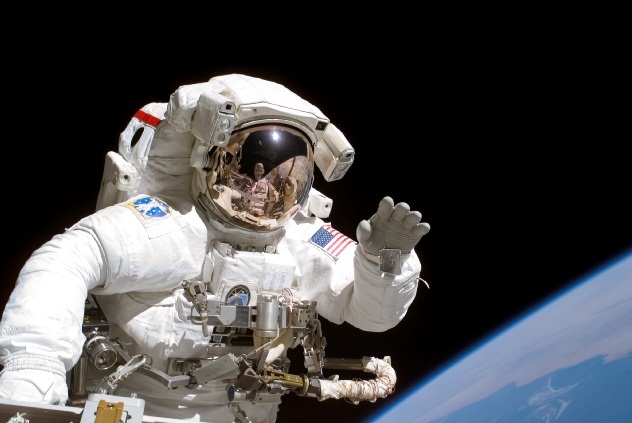
Perhaps one of the oldest and most common misconceptions is that we would explode if exposed unprotected to the vacuum of space. The logic here is that, since there is no pressure, we would simply bloat and pop, like a balloon that flew too high. But it may shock you to learn that humans are far more resilient than balloons. Jut like we don’t pop when jabbed with a needle, we wouldn’t pop in space—our bodies are just too tough for it. We would bloat a bit, that much is true. But our bones, skin, and other organs aren’t fragile enough to give way and burst unless something is actively tearing them.
In fact, several people have already been exposed to extremely low pressure environments when working on space missions. In 1966, one man was testing out a space suit when it decompressed at 120,000 feet. He lost consciousness, but did not explode, and made a full recovery.
9People Freeze

This is one misconception mostly perpetuated by movies. Many films set in space will have a scene where one character finds themselves outside the ship without a suit. They quickly begin to freeze and, unless they manage to get back inside, turn into an icicle and float away. The reality is the complete opposite. You wouldn’t freeze if you were exposed to space, you’d overheat.
We probably all remember those diagrams of convection currents in science class. Water over a heat source will heat up, rise to the top, cool down, sink to the bottom, and repeat. This happens because the water at the top transfers its heat to the air around it, which causes the water to contract, thus becoming more dense, and sinking. In space, as the name suggests, there is nothing to transfer your heat to, making cooling down enough to freeze impossible. So your body will continue to work away, generating heat as it does. Of course, before you became uncomfortably hot, you’d be dead.
8Your Blood Would Boil
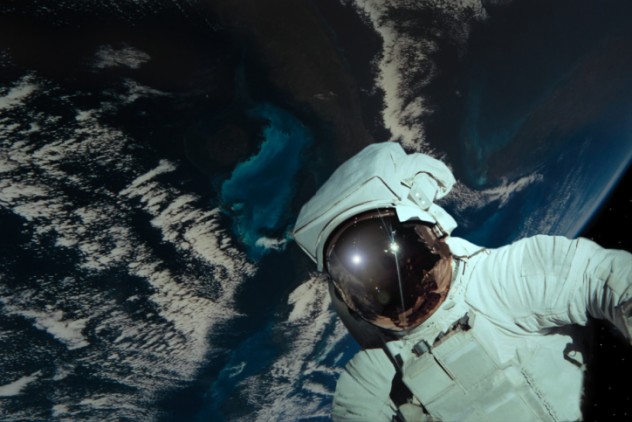
This myth has nothing do do with the fact that your body would overheat if you were exposed to empty space. Instead it comes from the fact that the boiling point of any liquid has a direct relationship with the pressure of its environment. The higher the pressure, the higher the boiling point and vice versa. This is because it’s easier for a liquid to turn to gas when there’s less pressure compressing it into its liquid state. So it’s not a huge leap of logic for people to assume that in space, where there is no pressure, liquids would boil, including your blood.
The Armstrong line is when atmospheric pressure is so low that liquids can boil at body temperature. The problem here is that while exposed liquids would boil in space, your blood wouldn’t. However, bodily fluids such as the those in your eyes and mouth would. In fact, the man who decompressed at 120,000 feet said the saliva boiled right off his tongue. The “boiling” wouldn’t actually be searing hot, it’d be more like they were drying out. But your blood, unlike your saliva, is inside a closed system, and still has your veins to keep it compressed in the liquid state. Even though you’d be inside a vacuum, the fact that your blood is locked inside your body means it won’t turn into gas and float away.
7The Sun

The Sun is one of the first things you study when learning about space. It’s a big fiery ball that all the planets spin around, and it’s just far enough away that it keeps us warm, but doesn’t cause us all to burst into flames. Given that we could never have existed were it not for the heat and light given off by the Sun, it’s surprising that so many of us have a pretty basic misconception about it: that it’s on fire. If you’ve ever burnt yourself on a flame then congratulations, you’ve had more fire on you than the sun ever has or will. In reality, the sun is a big ball of gas that gives off light and heat energy through nuclear fusion, which occurs when two hydrogen atoms combine and form helium. So the Sun does give off light and heat, but there is no conventional fire involved at all. It is simply a giant, warm glow.
6Black Holes Are Funnel-Shaped
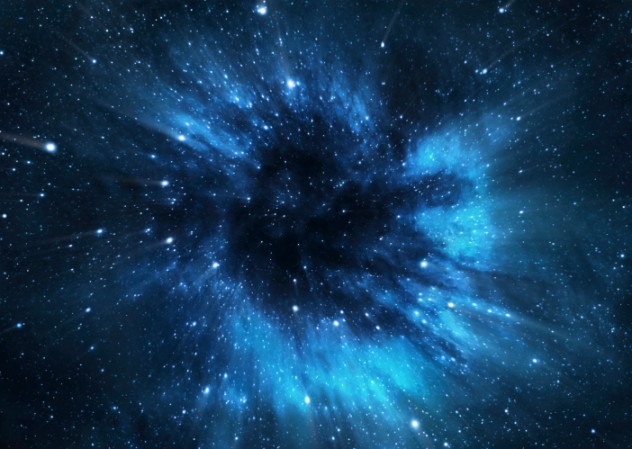
This is another common misconception that can be put down to the portrayal of black holes in movies and cartoons. Obviously black holes are essentially “invisible,” but for the sake of the audience they’re made to look like ominous whirlpools of doom. They’re shown as almost 2D, funnel-like objects, with an entrance to nothingness on one side only. In real life however, this representation could not be further form the truth. A real black hole is actually a sphere. There’s no one side that will pull you in, it’s just like a planet with a lot of gravity. If you pass by it too close on any side, you’ll get pulled in.
5Re-Entry
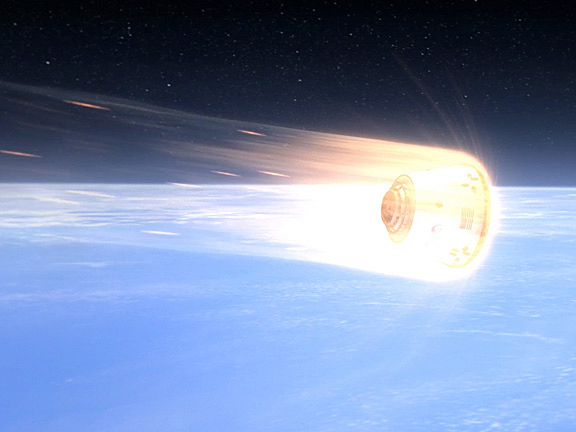
We’ve all seen clips of spacecraft re-entering the Earth’s atmosphere at some point. It’s a rough ride, and things tend to get extremely hot on the surface of the craft. Most of us will have been told that this is because of the friction between the craft and the atmosphere, which is an explanation that seems to make sense: A spacecraft is surrounded by nothing, and then suddenly shooting through an atmosphere at unfathomable speed. Of course things are going to get hot.
Well the truth is that friction has less than one percent to do with the searing heat associated with re-entry. While it is a contributing factor, the vast majority of the heat comes from compression. As the craft hurtles back down to Earth, the air it passes through is compressed and collects around the craft. This is known as the bow shock. The air in the bow shock is trapped by the spacecraft now pushing it around. The speed of this causes the air to heat up, allowing no time for decompression or cooling. While some of that heat is transferred to the craft and absorbed by the heat shield, the dramatic re-entry we see is mostly the air around the craft, and is exactly what scientists hope to see.
4Comet Tails
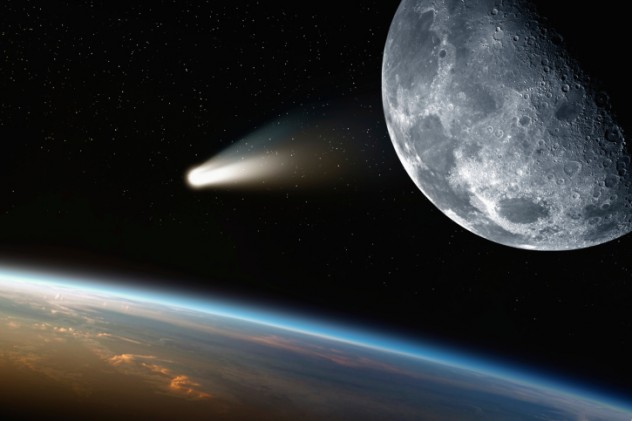
Picture a comet for a moment. Odds are most of you pictured a chunk of ice shooting through space with a stream of light or fire trailing behind it because of its speed. Well it may come as a surprise that the way a comet tail trails has nothing to do with the direction in which the comet is moving. That’s because, unlike with meteors, the tail of a comet is not the result of friction or break up. It’s caused by heat and solar wind, which melt the ice and send dust particles flying in the opposite direction. For this reason, the tail of a comet does not drag behind it, but will always point away from the Sun.
3Mercury
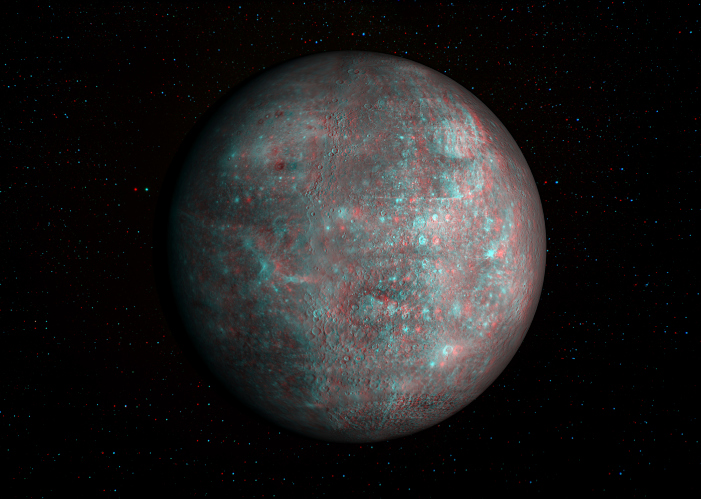
Since the demotion of Pluto, Mercury has been our smallest planet. It’s also the closest planet to the Sun, so it would be natural to assume that it’s our system’s hottest planet. Well, not only is that untrue, but Mercury can actually get pretty darn cold. First off, at its hottest, Mercury is about 801 degrees Fahrenheit (427 Celsius). If this was the constant temperature for the entire planet all the time, it would still be cooler than Venus, which is 860 degrees Fahrenheit (460 Celsius). The reason Venus is so much hotter despite being 49,889,664 kilometers (31 million miles) further away is that Venus has an atmosphere of CO2 to trap in the heat, whereas Mercury has nothing.
But another reason Mercury can get so cold, apart from the lack of atmosphere, is to do with its rotation and orbit. A complete orbit of the sun for Mercury takes about 88 Earth days, while complete rotation of the planet is about 58 Earth days. This means that night lasts 58 days on the the planet, giving the temperature plenty of time to drop down to a cool -279 degrees Fahrenheit (-173 Celsius).
2Probes
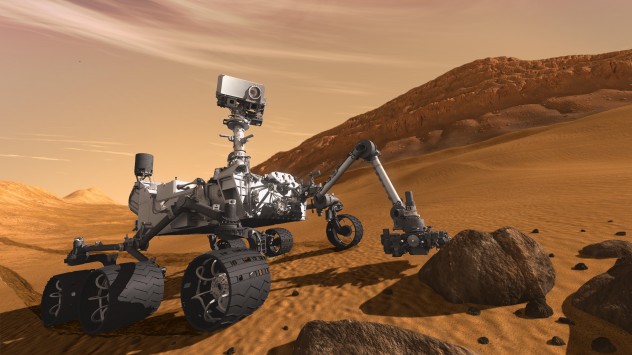
Everybody knows about the Curiosity rover on Mars and the important scientific research it’s conducting. But people seem to have forgotten about many of the other probes we’ve sent out over the years. The Opportunity rover landed on Mars in 2003, and was given a 90 day life expectancy. Almost 10 years later, it’s still roving.
Most people seem to think that we’ve never managed to send a probe to any planet other than Mars. Of course, we’ve sent all sorts of satellites into orbit, but landing on a planet is vastly more complex. Still, it’s actually a lot more common than you think. Between 1970 and 1984, the USSR successfully landed eight probes on the surface of Venus. The difference here is that the atmosphere on Venus is considerably more hostile, and even if a rover managed to land it would soon be cooked and crushed. The longest a rover lasted was about two hours, much longer than anticipated.
If we move a little further out into space, we’ll reach Jupiter. Now Jupiter is even trickier for rovers than Mars or Venus, seeing as it’s made almost entirely of gas, which isn’t ideal for driving on. But that didn’t stop scientists from sending in a probe. In 1989, the Galileo spacecraft was sent to examine Jupiter and its moons, which it did for the next 14 years. Six years into its mission, it dropped a probe down to Jupiter, which beamed information back about its composition. Although another craft is on its way to Jupiter, this remains the only probe to enter its atmosphere, and the information it gathered is invaluable. It sent completely unexpected measurements, forcing scientists to totally reevaluate how they thought planets formed and worked.
1Zero-Gravity
This one is so seemingly obvious that many people will have a hard time believing it’s not true. Satellites, spacecraft, astronauts, and so on do not experience zero-gravity. True zero-gravity, or micro-gravity, barely exists anywhere in space, and certainly no human has ever experienced it. Most people are under the impression that astronauts and everything else in spacecrafts are floating around because they’ve gone so far away from Earth that they are no longer affected by its gravitational pull, when actually it’s the presence of gravity that causes floating.
When orbiting Earth, or any other celestial body large enough to have significant gravity, an object is actually falling. But since the Earth is constantly moving, things like spacecrafts don’t crash into it. The Earth’s gravity is attempting to pull the craft down onto its surface, but Earth keeps moving, so the craft keeps falling. This perpetual fall is what results in the illusion of zero-gravity. The astronauts are also falling inside the craft, but since they’re moving at the same speed, it looks like they’re floating. The same phenomenon could be experienced in a falling elevator or plane. In fact, the weightless scenes for the movie Apollo 13 were filmed in a falling plane used to train astronauts. The plane climbs up to 30,000 feet before going into a near-freefall, which allows for 23 seconds of “zero-gravity.” Although it lasts for less than a minute, it’s exactly what real astronauts experience in space.
Simon is a 23-year-old university graduate who likes to adhere to Irish stereotypes, such as drinking and loving the potato. You can follow him on Twitter, or like his extremely long tongue on Facebook to see if he can break the world record.








